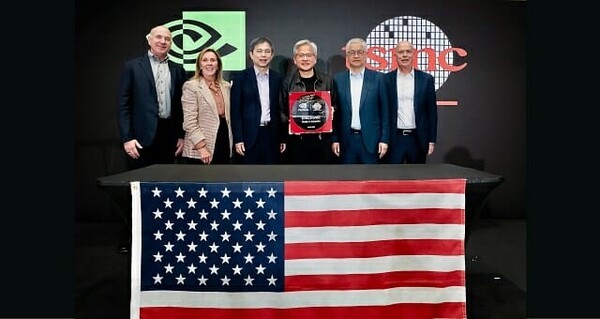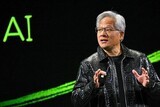NVIDIA CEO Jensen Huang pushed back against rising global concerns of an AI bubble during the company’s third-quarter earnings call on November 19. Speaking after the results were released, Huang argued that the ongoing surge in GPU investment is grounded in real demand rather than speculation. The company’s massive 500 billion dollar order backlog and its rapidly expanding supply chain strategy were presented as evidence that the acceleration of AI infrastructure spending is only beginning.

Confronting AI Bubble Fears with Confidence: “NVIDIA Outperforms at Every Level”
Huang said NVIDIA is the only company that holds a technical advantage across every stage of AI model development and operation. He dismissed recent market warnings about overheated optimism, saying enterprises around the world are redesigning their businesses around AI and that GPU purchases are now fully backed by structural demand. His message to the market was clear: the surge in AI infrastructure investment reflects a long-term transformation rather than a temporary spike.
A 500 Billion Dollar Order Backlog Extending Beyond Blackwell into the Rubin Era
NVIDIA has secured a staggering 500 billion dollars in GPU orders stretching from early this year to the end of next year. Such a scale is nearly unprecedented for a single semiconductor supplier and signals that companies are not slowing down their large-scale AI model expansions.
Chief Financial Officer Colette Kress noted that the backlog spans both the current Blackwell architecture and the next-generation Rubin platform. New customers including Anthropic continue to join the ecosystem, further strengthening NVIDIA’s dominance. This global wave of AI spending is also expected to influence the pace and direction of AI development within Korean companies.
Zero Revenue Assumption in China: A Strategy Built Around Geopolitical Risk
NVIDIA reported that sales of the H20 GPU in China were effectively zero during the quarter. Continued geopolitical tension between the United States and China, combined with rising local competition, led the company to take a conservative stance. It assumed zero data center revenue in China for the fourth quarter as well.
Kress said NVIDIA aims to keep dialogue open with both governments, although competitive pressure in China remains challenging. This approach signals a deliberate shift away from China and toward high-growth markets in North America and the Middle East. For Korean chipmakers and server suppliers, this may translate into new opportunities within NVIDIA’s redistributed supply chain.
Expanding Production in the United States: Securing Supply Chain Leadership on American Soil
A surprising highlight of the earnings call was NVIDIA’s plan to significantly expand GPU production in the United States. Initial Blackwell wafers are already rolling off TSMC’s Arizona fab, and the company intends to deepen its partnerships with Foxconn, Wistron and Amkor to strengthen domestic production capacity.
Huang said every key manufacturing partner, from foundries to memory suppliers, is fully prepared for expansion. The move closely aligns with Washington’s semiconductor self-sufficiency agenda and demonstrates how tightly NVIDIA’s supply chain strategy is woven into U.S. industrial policy. Korean companies with strong HBM, packaging and foundry capabilities are increasingly well positioned to secure a greater role in this reshaped ecosystem.
The Source of NVIDIA’s Dominance: CUDA, an Expanding Ecosystem and Real-World Demand
At the core of Huang’s message that “NVIDIA is different” lies the CUDA ecosystem. The company does not merely sell GPUs. It provides a full stack of software tools, compilers and optimization systems that integrate training and inference into a unified platform. This tightly coupled structure creates an entry barrier that is difficult for competitors to match, even if they close the raw hardware performance gap.
This is also why Korean enterprises and startups that build AI services continue to rely heavily on NVIDIA. The company’s ecosystem represents a structural advantage that goes far beyond short-term market cycles.
Beyond Bubble Talk: NVIDIA Is Generating More Revenue Than Any Company in the AI World
From its enormous order backlog to its supply chain expansion and risk-adjusted China strategy, NVIDIA’s latest earnings call underscores one conclusion. The AI market is no longer driven by expectations. It is now driven by committed capital.
Huang’s statement that “this is not a bubble” reflects more than corporate optimism. It is backed by signed contracts, forward-secured manufacturing capacity and a clear roadmap into next-generation architectures. The AI infrastructure market is still in its early stages, and NVIDIA is widening its influence across both technology and supply chains at unprecedented speed.
Investment Analyst yoian@kakao.com
- [Tech Column] Is the AI Boom a Bubble in the Making? Michael Burry Targets GPU Depreciation and a $5 Trillion Bet
- Masayoshi Son’s AI Gamble: Selling Nvidia, Going All-In on OpenAI
- NVIDIA Secures HBM4 Samples from Samsung and SK hynix
- Jensen Huang: “In the AI race, China will be the ultimate winner”… Criticizes U.S. export ban
- Nvidia Declares the Dawn of an “AI Virtuous Cycle” as It Delivers Record-Shattering Q3 Earnings
- Sovereign AI: Where Jensen Huang and Lee Hae-jin Converge
- Nvidia's H200 May Get Green Light for China as Trump Administration Debates Export Policy

![[동학] 카카오톡 친구탭, 결국 12월 롤백… “격자형 피드는 선택 옵션으로”](https://cdn.kmjournal.net/news/thumbnail/custom/20251126/5517_10550_1119_1763853080_120.jpg)


![[테크 칼럼] 제미나이3, GPT-5.1을 넘다…AI는 이제 ‘일을 대신하는 시대’로 간다](https://cdn.kmjournal.net/news/thumbnail/custom/20251126/5457_10454_4847_1763621329_120.jpg)



![[낭만 테크 시대] AI 대항해 시대](https://cdn.kmjournal.net/news/thumbnail/custom/20251126/5603_10714_4334_1764121414_160.jpg)

